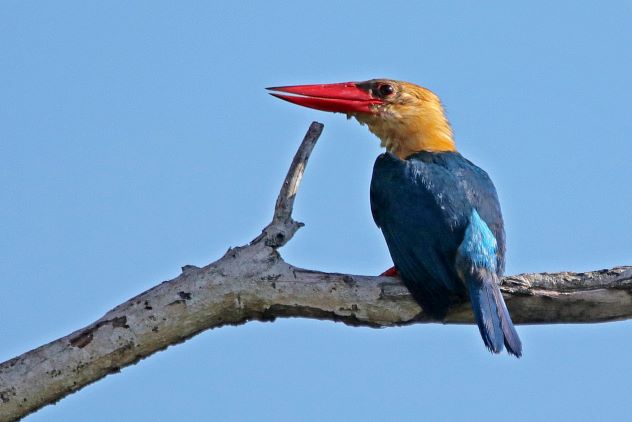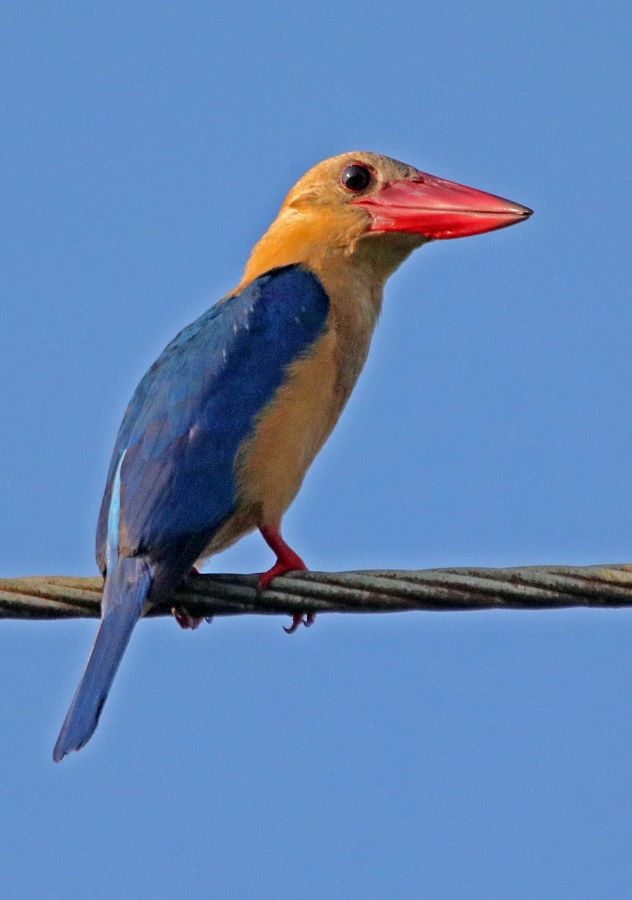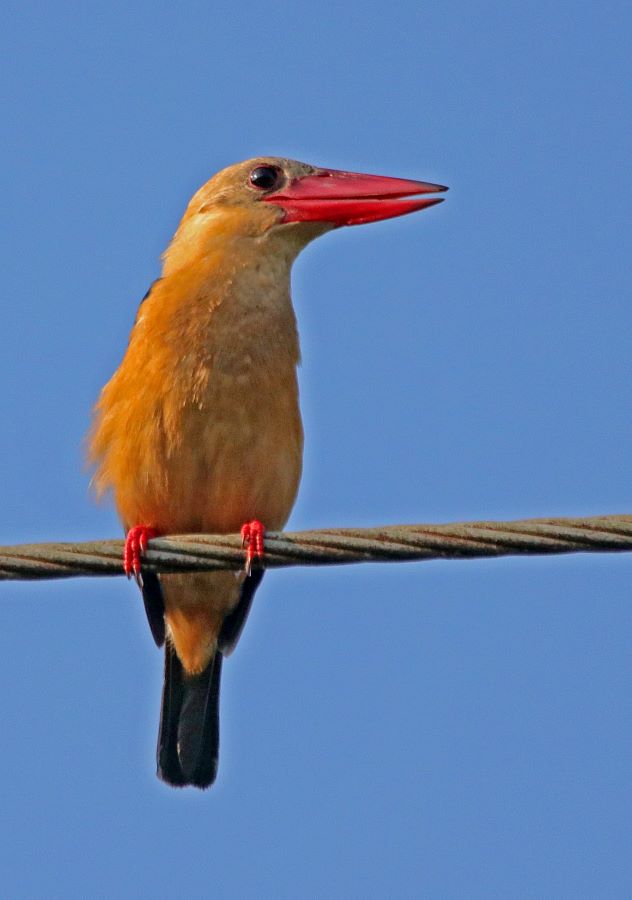The stork-billed kingfisher (Pelargopsis capensis) is a large tree kingfisher which has a large distribution that covers the vast majority of Asia. This kingfisher is resident throughout its range, living in a variety of lowland forests near lakes, rivers, or coasts.
I have encountered this kingfisher at Kuala Baram Wetlands on several ocassions. They are larger in size than collared kingfisher.
Measuring up to 35 cm (14 in) in length, the adult has a green back, blue wings and tail, and olive-brown head. Its underparts and neck are buff. The very large bill and legs are bright red.
It perches quietly whilst seeking food, and is often inconspicuous despite its size. It is territorial and will chase away eagles and other large predators. This species hunts fish, frogs, crabs, rodents and young birds. Like other kingfishers, it is able to hover above the water while searching for fish. Their heavy body weight gives them enough power to swoop down fast on a fish that is close to the water surface.
Stork-billed Kingfishers are known to dig their nests in river banks or in a decaying tree or tree termite nests. During every breeding season, a clutch of 2-5 eggs is typical. They are vocal in breeding season, giving a loud, far-reaching “peu-peu-pow” whistle, while its regular contact call is a loud laughing “ka-ka-ka” repeated 6-10 times.
Stork-billed kingfishers live in a family with an average of 6 members. A family of six can consume about 100 fish a day. They are fiercely territorial and have been known to chase away much bigger animals such as eagles. As predators, the stork-billed kingfisher lives on freshwater fish and crustaceans as well as frogs and small rodents. When other food sources are scarce, this species hunts smaller birds and chicks to fulfill their hunger, which highlights their range of skills to be able to hunt both aquatic and terrestrial prey.
Stork-billed kingfishers play an important role in controlling fish populations, and also has an impact on other small terrestrial species. Their forest habitat and need for water to hunt makes them vulnerable to development, deforestation and water pollution. The average life span of the kingfishers is about two years.
 CY@CY Says Welcome to my dreamscape. Where a Lim is also a Ling.
CY@CY Says Welcome to my dreamscape. Where a Lim is also a Ling.


